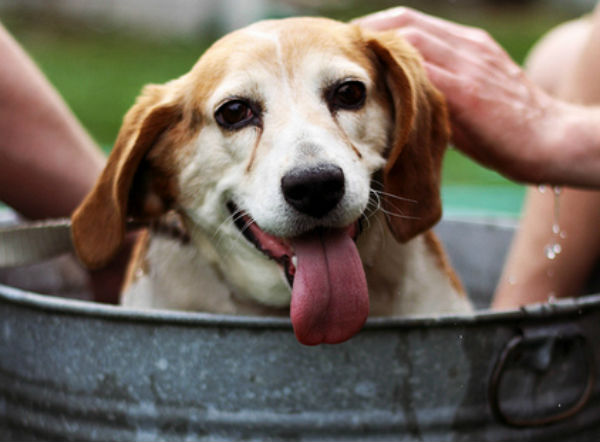Pet insurance should be a well-researched purchase for petowners, as there are now more options on the market than everbefore.
|Though expensive premiums may be cumbersome for many clients,basic insurance premiums average $50 a month, according to petinsurer Trupanion. Coverages, of course, vary from policy topolicy, and range from basic emergency coverage to full“maintenance” plans. The price of pet premiums varies by their spanof coverage, species, age and, of course, breed.
|Click through the following pages to review the options toconsider when looking at pet insurance for your clients.
||Conditions
Some of the basic needs for coverage are medication, routinecheck-ups and emergency services. Common problems for dogs, such asingesting harmful objects, can cost upward of $1,500 per visit.Cats have medical issues too, and their costs can be similar.
|It's in the best interest of your client to get insurance whentheir pet is young, to take advantage of more affordable premiums,and also to see if their provider will cover immunizations andneutering or spaying.
|Many insurers may reimburse medical expenses for emergencies andservices such as X-rays and hospitalizations, but be wary that somealso require a waiting period for accidents and illnesses.
||Pre-existing conditions
Hereditary issues such as skin or breathing problems can beconsidered pre-existing conditions in some pets.
|“No pet insurance company covers pre-existing conditions,” saidKathryn Clappison, a spokeswoman for Trupanion.
|For example, a specific type of dog breed might be notorious forasthma problems, or hip dysplasia later in life, andoftentimes insurers will leave out services that offerreimbursement for medical care related to these conditions.
|To be sure of all pre-existing issues, insurers might require avet to examine your client's pet before issuing a policy, and it'simportant to know what conditions would or would not be covered bythe insurance provider. Like health insurance for humans, it can beeasy for clients to get confused about what is and is not coveredby the new policy.
||Renewable benefits
Some insurance plans may not allow similar services for yourclient's pet during consecutive renewals.
|If a pet was treated for a medical issue in one year, insurerscan claim the illness or problem as a pre-existing condition,cutting the possibility of future treatment. It's always best tocheck with the insurance provider to see if they offer renewablebenefits for your client's pet before making any assumptions.
||Exclusions
In order to keep your client's costs down, agents shouldevaluate the overall needs of the pet and tailor the planrecommendation individually. There may not be a need for everyservice offered, especially if the breed doesn't require it or ifthe pet is generally healthy.
|Not every pet insurance premium is equal. Sometimes it might becheaper if routine dental work or preventative care wasn't includedin the policy – sometimes they're not even offered if they weren'tcaused by an accident or injury. Your client's policy also might bedifferent based on their pet breed and age.
||Reimbursement
In 2009, $12.7 billion was spent on veterinary care, accordingto the American Pet Products Association. As more technology isbeing introduced into pet treatment, such as radiation and diabetestreatment, costs are expected to rise, and the financial burdenwill be placed on pet owners. If those owners have insurance fortheir pets, they will need to seek reimbursement for thesetreatments.
|It's always best to review the insurance company's benefitsschedule for any pet policy. This will break down the payments andapplicable fees for your client, such as co-pays and deductibles.Check to see if the insurance company plans to reimburse yourclient directly, or if they plan to go through the veterinarian.Also ask if the client will need to pre-pay for every service, orif the insurer can deal directly with the vet for some, more basicservices.
||Veterinarian networks
Similar to human health insurance policies, many pet insurersrequire that your client go through a network of vets offeredthrough the company to ensure coverage. This can be a make-or-breaksituation for whatever provider your client chooses, given thatveterinarian history with the client's pet is often important toowners. It isn't always easy to find a new vet on short notice.
|Before buying a policy, check to see who your client's preferredvet is and see if they're in the insurer's network. Moreimportantly, if they do not have a preferred provider make surethere is one in their area that works with the potential insurer.It may be easiest to call around to different vet offices directlyto ask what insurance providers they handle.
||Important Questions to Ask
• Can your client choose anyvet?
|• Does the policy coverannual wellness exams?
|• Is there a dollar limitfor vet office fees?
|• Are prescription drugscovered?
|• Will the policy coverspaying or neutering charges?
|Want to continue reading?
Become a Free PropertyCasualty360 Digital Reader
Your access to unlimited PropertyCasualty360 content isn’t changing.
Once you are an ALM digital member, you’ll receive:
- All PropertyCasualty360.com news coverage, best practices, and in-depth analysis.
- Educational webcasts, resources from industry leaders, and informative newsletters.
- Other award-winning websites including BenefitsPRO.com and ThinkAdvisor.com.
Already have an account? Sign In
© 2024 ALM Global, LLC, All Rights Reserved. Request academic re-use from www.copyright.com. All other uses, submit a request to [email protected]. For more information visit Asset & Logo Licensing.















